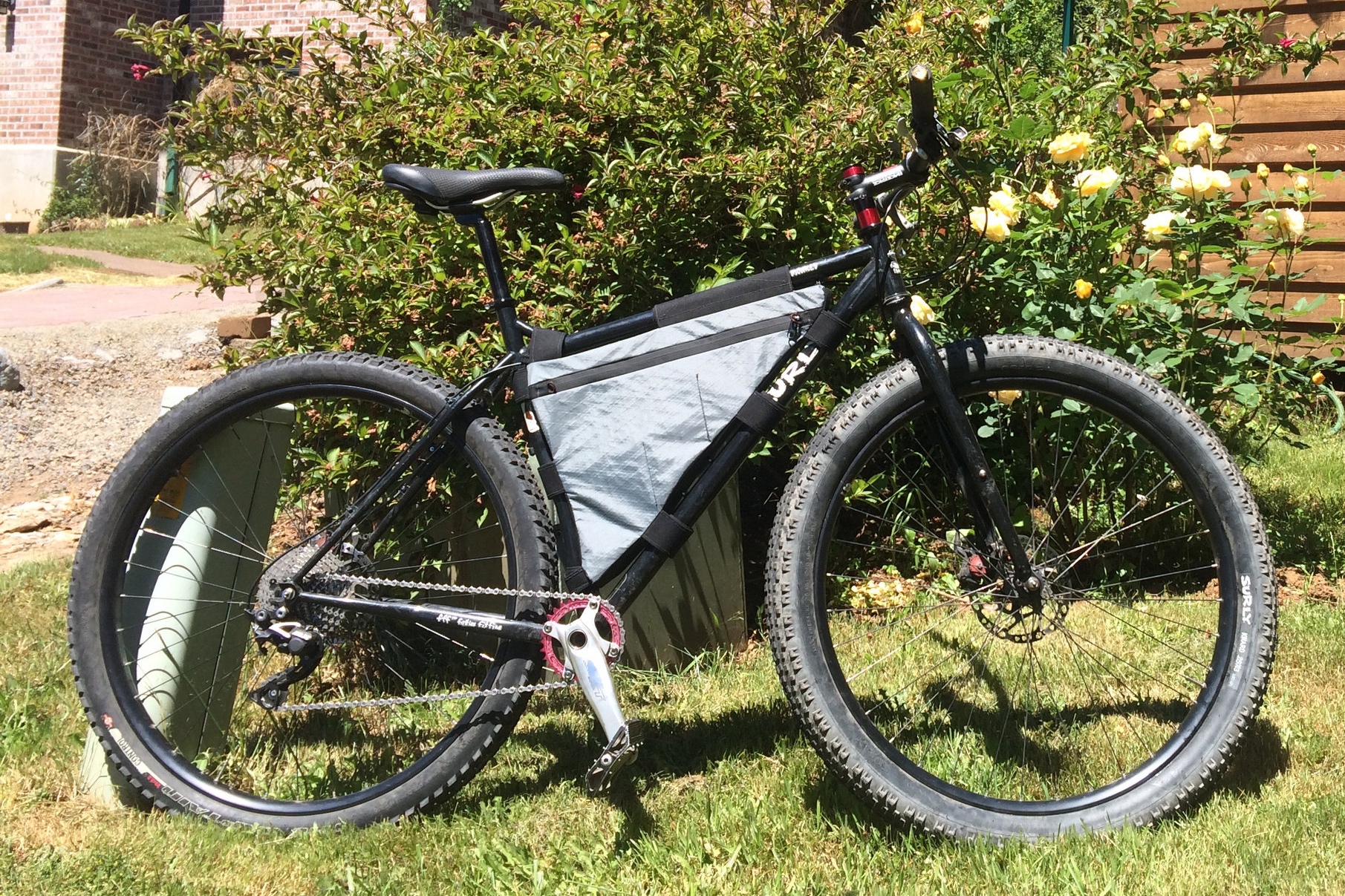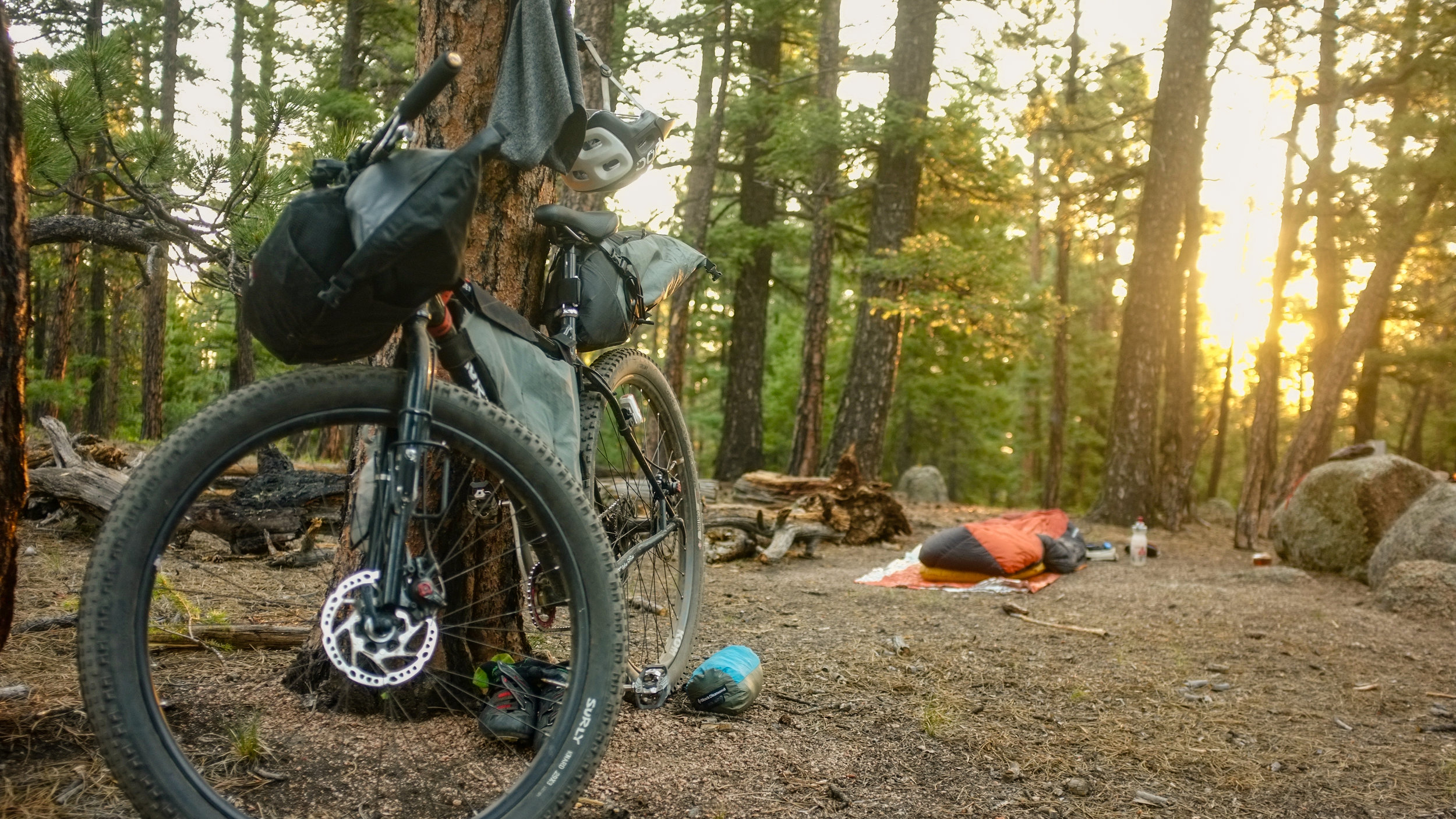big adventure on the cheap
When I decided to give bikepacking a try two summers ago, I knew how I wanted to approach it. As with many mountain sports, bikepacking is gear-intensive. Modern mountain bikes are expensive, and that’s before bags, specialized tents, and a host of other specific equipment. I don’t like buying a bunch of new gear for my adventures, and I didn’t see why cost should come between me and the experiences I was looking for.
The first thing I did was replace my single-purpose commuter bike with a rigid steel mountain bike bought from Craigslist for $650. With a new set of wheels, this bike would serve my commuting needs as well as my aspirations for long-haul mountain adventure. I converted the drivetrain to 1x10, bought a new back wheel, and built up a frame bag with my Mom.
In the years I’ve had it, my humble steed has only failed me once, on a shakeout trip to the coast (hence the new back wheel). After that early hiccup we’ve bikepacked the 550 mile Colorado trail and the 700 mile Oregon Timber Trail together, not to mention untold trips on the Rose City’s cafe/bar/swimming hole circuit.
Messages of inferiority blanket American culture, and the outdoor sphere’s no exception. We’re constantly told we’re not fit/strong/fast/good enough and the answer is a shiny new piece. Remember that you can opt-out of this materialist bullshit if you want. Be your own judge of what equipment you need for the experience you want.
The following are a few guideposts you can use to select your equipment while keeping experience paramount:
Quality. Buy well made gear that will last. Quality gear delivers returns in longevity and performance.
Systems. Make sure your equipment works well together. Practice with it.
Minimalism. Fewer things to distract from your passion. Kill your unitaskers.
Requirements. What features are important to you? Get them. DON’T get features you don’t need.
Repair. Do the planet and your wallet a favor and fix it if possible.
Cost. Quality need not be expensive. Check used retailers, craigslist, and online. Be patient and get what you really want.
Experiment. Modify your equipment and systems to work for you, don’t be afraid to make your gear your own.
If you’re uncertain whether to buy something new, a simple litmus test is this - will this thing enable or substantially enhance the experience I want? If so, buy it. If not, take a breath and leave the shop with nothing in your hands.
Equipment should always serve experience. Gear is a means and not an end. Get what you need to get out into the world and make contact with something raw and real, and leave the rest behind.
My friends have gotten used to my curmudgeonly thrift and now encourage it with comments like “Buy a real bike!'“ and “You’re really going to ride the Oregon Timber Trail on that?!” but I don’t care. It works well for me. If at some point this bike starts limiting my experience I’ll buy something else, but until then we’re making out just fine.






